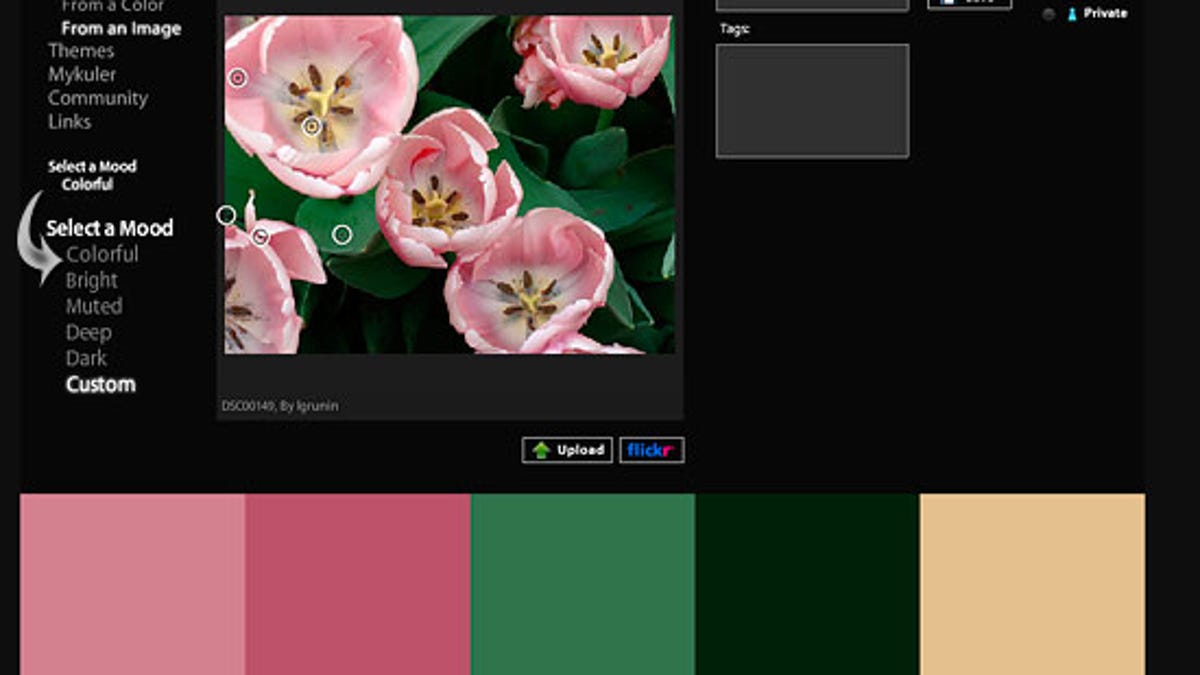Flickr gets Kuler
Adobe's color technology creates shareable palettes from your photos.

Although I've yet to find a personal use for it, I've always been intrigued by Adobe's Kuler technology. Most of the implementations we've seen so far, which includes the Web site and integration into Adobe Illustrator, have targeted at generating shareable color palettes from individual user-specified colors or from palette-color drawings. But Adobe extends that to continuous-tone imagery for Flickr users, who can load images into Kuler to generate image-based palettes. John Nack describes how use it (he doesn't explicitly state that you launch it from Kuler, not from Flickr, which confused me for a minute).
The software automatically selects various color points in the image, which you can change simply by dragging the circles. Selecting different "moods" swaps various colors in and out. Maybe it's the images I selected, but I find the different moods produce very similar results. In Illustrator, it can generate palettes based on color "Harmony rules"--complementary, analagous, shades, and so on--and it'd be neat if it could, say, pick the most frequently occurring color in the image and generate palettes by hunting for the nearest color matches within the photo that meet those criteria. The whole idea is also conceptually related to a recently released WordPress theme that does similar color extractions to automate your photoblog design on-the-fly to match your photos.
That said, while playing with the tool I couldn't help but imagine the even neater things Chris Harrison might be able to visualize using a set of palettes returned by the mass of Flickr users. If you haven't seen his stuff, check it out. Pretty amazing.

